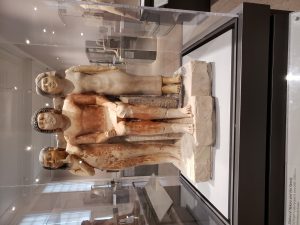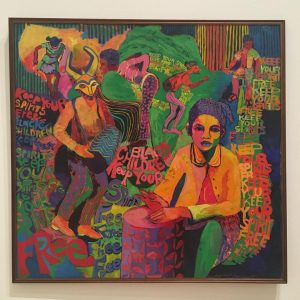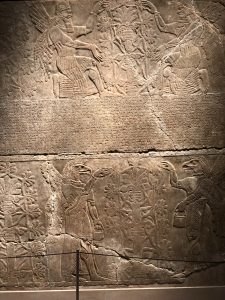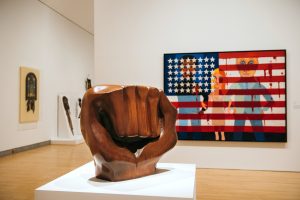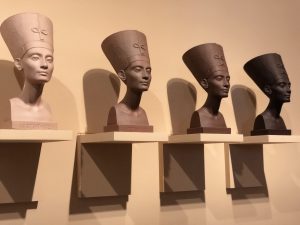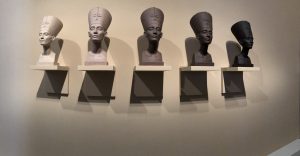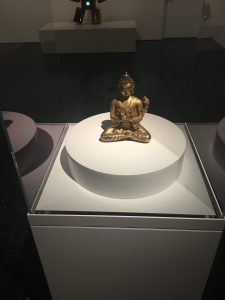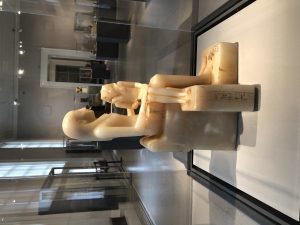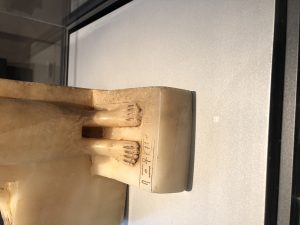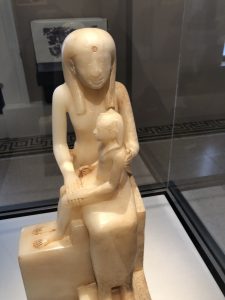During my visit to the Brooklyn Museum, I decided to really take my time viewing the different sculptures in the exhibition of the Ancient World only because I knew these artifacts and sculptures all go way back in time and they all truly have a significance to it even if we aren’t sure what it may be, we all have different perspectives in each piece of art which makes it a lot more interesting to some. What caught my eye the most was the Statue of Nykara and His Family, before reading the information below it I thought the statue was of a young king with two women besides him as if they were his protectors in some way. I also notice that he had a closed tight fist and the person on his left side had his finger on his mouth as if he was saying “silence”, while the person on his right seem to have their arm wrapped under his or behind since it wasn’t visible. After reading the information I learned that the statue depicted Nykara seated between the two figures whom were his wife and son. Each statue was head to head, on the same height but if Nykara was to stand he would probably be double their size but that the mother and son were the same height. I could also tell how the sculptor’s added much detail to the hair or wig on each one of them, the wife’s hair had both horizontal and vertical line, Nykara’s hair or wig was made of somewhat curves or curls and the young son’s hair was long and fallen over his shoulder in what seemed to be a braid. Each sculpture was also looking straight forward, which seemed as if they were all directing their attention to the same place. I could also tell that the wife kind of had somewhat of a smirk in her smile, and she was also wearing a dress whereas the son didn’t have any on and he also had his hand on his father’s shoulder depicting the respect and love he had towards him. Overall I think this sculpture was showing the strength, love and respect they each had for each other as a family and how each of them were equally important to each other.
